
|
Now it is bright as 6.4 mag (June 8, Marco Goiato). It keeps 6-7 mag until mid July. In the Southern Hemisphere, it keeps observable in excellent condition after this. In the Northern Hemisphere, it locates low in the south.
Date(TT) R.A. (2000) Decl. Delta r Elong. m1 Best Time(A, h)
June 11 21 53.56 -29 37.2 0.741 1.518 118 6.2 4:37 (180, 84)
June 18 20 42.18 -40 42.2 0.653 1.571 139 6.0 3:00 ( 0, 85)
|

|
Now it is 11.6 mag (June 8, Chris Wyatt). It will be fading slowly after this. In the Northern Hemisphere, it will be getting lower gradually and will be unobservable in August. It is observable in the evening sky also in the Southern Hemisphere until August.
Date(TT) R.A. (2000) Decl. Delta r Elong. m1 Best Time(A, h)
June 11 11 5.72 31 2.3 3.047 2.968 75 11.2 18:25 (171, 24)
June 18 11 9.49 28 29.2 3.189 3.021 71 11.4 18:25 (165, 25)
|

|
Now it is 11.6 mag (June 9, Marco Goiato). It keeps 11-12 mag until September. In the Northern Hemisphere, it will be getting lower gradually after this. In the Southern Hemisphere, it keeps observable in good condition for a long time.
Date(TT) R.A. (2000) Decl. Delta r Elong. m1 Best Time(A, h)
June 11 12 5.06 8 14.2 1.145 1.626 97 11.6 18:45 (180, 47)
June 18 12 14.71 5 54.5 1.175 1.606 94 11.5 18:27 (180, 49)
|

|
Now it is 10.9 mag (May 24, Thomas Lehmann). It keeps 11 mag until summer. In the Northern Hemisphere, it will be unobservable soon. It locates somewhat low in the Southern Hemisphere, but it keeps observable until August.
Date(TT) R.A. (2000) Decl. Delta r Elong. m1 Best Time(A, h)
June 11 8 39.90 19 10.5 2.153 1.640 47 11.7 18:25 (133, 21)
June 18 8 59.24 18 3.2 2.173 1.624 45 11.6 18:25 (131, 20)
|

|
It passed only 0.036 a.u. from the earth on Mar. 21-22, and brightened up to 3.9 mag (Mar. 21, Thomas Lehmann). It kept brightening even after the perihelion passage. However, it is fading rapidly now. It has already faded down to 12.6 mag (June 5, Alan Hale). It keeps observable in excellent condition for a while after this both in the Northern Hemisphere and Southern Hemisphere.
Date(TT) R.A. (2000) Decl. Delta r Elong. m1 Best Time(A, h)
June 11 16 39.17 4 52.7 0.558 1.526 150 11.8 23:18 (180, 50)
June 18 16 36.42 3 22.0 0.632 1.588 148 12.7 22:48 (180, 52)
|
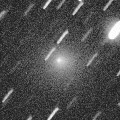
|
Now it is bright as 12.5 mag (June 6, Michael Jager). It is observable in excellent conditione in the Northern Hemisphere. It locates very low in the Southern Hemisphere. It will fade out rapidly after July.
Date(TT) R.A. (2000) Decl. Delta r Elong. m1 Best Time(A, h)
June 11 20 24.30 52 37.9 1.162 1.597 94 12.4 3:09 (180, 2)
June 18 19 8.40 53 20.9 1.116 1.649 101 12.7 1:26 (180, 2)
|

|
It will brighten up to 11 mag from summer to autumn. However, it was faint as 18.2 mag in February (Feb. 17, Alexander Baransky), fainter than this ephemeris by 2 mag. Now it is appearing in the morning sky, but it keeps low for some time.
Date(TT) R.A. (2000) Decl. Delta r Elong. m1 Best Time(A, h)
June 11 3 8.40 24 19.1 2.365 1.564 29 12.7 5:34 (235, 5)
June 18 3 31.97 25 5.3 2.311 1.528 30 12.4 5:36 (234, 6)
|

|
Now it is 12.6 mag (June 3, Giuseppe Pappa). It keeps 12-13 mag for a long time from 2015 autumn to 2016 summer. In the Northern Hemispehre, it keeps observable in good condition for a long time. It keeps unobservable until July in the Southern Hemisphere.
Date(TT) R.A. (2000) Decl. Delta r Elong. m1 Best Time(A, h)
June 11 16 0.32 65 5.0 2.642 2.840 90 12.5 22:37 (180,-10)
June 18 15 42.68 61 59.3 2.661 2.866 91 12.5 21:53 (180, -7)
|

|
Now it is 13.4 mag (May 22, Ken-ichi Kadota). It brightened up to 6 mag from autumn to winter. Now it is fading. It is not observable after this in the Southern Hemisphere. It will be extremely low from May to June also in the Northern Hemisphere.
Date(TT) R.A. (2000) Decl. Delta r Elong. m1 Best Time(A, h)
June 11 5 25.27 46 42.6 4.146 3.242 23 13.2 18:25 (130,-28)
June 18 5 30.98 46 49.7 4.229 3.323 23 13.3 5:36 (230,-26)
|

|
Now it is 14.8 mag (June 10, Jean-Francois Soulier). It is observable in excellent condition in the Southern Hemisphere.
Date(TT) R.A. (2000) Decl. Delta r Elong. m1 Best Time(A, h)
June 11 19 50.44 -25 26.7 5.068 5.930 145 13.3 2:33 (180, 80)
June 18 19 47.82 -25 31.1 5.009 5.928 152 13.3 2:03 (180, 80)
|

|
New comet discovered from the STEREO spacecraft images in May. It brightened up to 8 mag due to the forward scattering. In the Southern Hemisphere, it is appearing in the evening sky, and it will be getting higher rapidly. It it not observable in the Northern Hemisphere.
Date(TT) R.A. (2000) Decl. Delta r Elong. m1 Best Time(A, h)
June 11 7 28.94 7 28.8 1.136 0.660 35 13.5 18:25 (112, 17)
June 18 8 19.25 3 11.7 1.113 0.769 42 14.1 18:25 (112, 24)
|
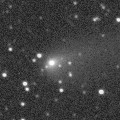
|
Now it is 13.2 mag (June 3, Giuseppe Pappa). It keeps 13 mag for a while. It is observable in excellent condition in the Southern Hemisphere. But it locates somewhat low in the Northern Hemisphere.
Date(TT) R.A. (2000) Decl. Delta r Elong. m1 Best Time(A, h)
June 11 15 21.46 -22 42.1 1.475 2.425 153 14.0 22:00 (180, 78)
June 18 15 19.06 -22 34.2 1.536 2.445 146 14.1 21:31 (180, 78)
|
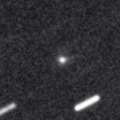
|
Now it is 14.4 mag (June 8, Chris Wyatt). It will be observable at 14 mag in good condition from spring to summer.
Date(TT) R.A. (2000) Decl. Delta r Elong. m1 Best Time(A, h)
June 11 21 12.51 -10 57.9 1.746 2.451 122 14.1 3:55 (180, 66)
June 18 21 14.86 -10 55.6 1.690 2.460 129 14.0 3:29 (180, 66)
|

|
It is not observable now. It will be observable at 16.5 mag in September in the Northern Hemisphere, or in November in the Southern Hemisphere.
Date(TT) R.A. (2000) Decl. Delta r Elong. m1 Best Time(A, h)
June 11 5 51.12 18 31.1 2.977 1.981 9 14.2 18:25 (106, -9)
June 18 6 8.93 18 41.1 2.985 1.980 6 14.2 18:25 (105,-11)
|

|
Now it is 15.1 mag (Jan. 2, Ken-ichi Kadota). Distant object, but it keeps observable at 14-15 mag for a long time from 2015 to 2016.
Date(TT) R.A. (2000) Decl. Delta r Elong. m1 Best Time(A, h)
June 11 0 27.74 2 9.1 5.083 4.885 73 14.4 5:34 (216, 47)
June 18 0 32.33 2 19.4 4.984 4.886 78 14.4 5:36 (208, 49)
|
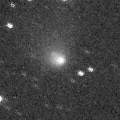
|
Now it is bright as 13.7 mag (June 3, Giuseppe Pappa). In the Northern Hemisphere, it will be getting lower gradually after this, and it will be unobservable in late July. In the Southern Hemisphere, it keeps observable in good condition until autumn. But it will be fading slowly after this.
Date(TT) R.A. (2000) Decl. Delta r Elong. m1 Best Time(A, h)
June 11 12 32.67 -18 45.9 1.742 2.345 113 14.5 19:12 (180, 74)
June 18 12 35.76 -19 37.6 1.821 2.350 108 14.6 18:48 (180, 75)
|

|
Now it is 15.9 mag (May 4, Hidetaka Sato), brighter than originally predicted. It will brighten up to 14 mag in summer. In the Southern Hemisphere, it keeps observable until winter, but it locates somewhat low. In the Northern Hemisphere, it is not observable now. It will appear in the morning sky in July, then it will be observable in excellent condition.
Date(TT) R.A. (2000) Decl. Delta r Elong. m1 Best Time(A, h)
June 11 2 20.05 -1 34.9 1.878 1.447 49 14.7 5:34 (247, 31)
June 18 2 40.15 1 1.0 1.852 1.437 50 14.6 5:36 (243, 31)
|

|
It will brighten up to 13 mag in summer. But it keeps unobservable for a long time. It will appear in the morning sky in December, when the comet will be fainter than 15 mag.
Date(TT) R.A. (2000) Decl. Delta r Elong. m1 Best Time(A, h)
June 11 5 46.31 18 5.2 2.788 1.789 8 14.8 18:25 (105,-10)
June 18 6 6.26 17 52.8 2.736 1.732 7 14.6 18:25 (104,-11)
|
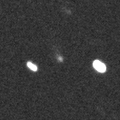
|
Now it is bright as 14.9 mag (May 4, Hidetaka Sato). It keeps 15 mag until autumn. In the Southern Hemisphere, it keeps observable for a long time. It will be unobservable after this in the Northern Hemisphere.
Date(TT) R.A. (2000) Decl. Delta r Elong. m1 Best Time(A, h)
June 11 5 44.80 -40 1.3 2.565 2.298 63 15.0 18:25 ( 55, 22)
June 18 6 2.74 -41 58.3 2.524 2.296 65 14.9 18:25 ( 53, 21)
|
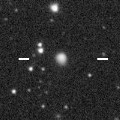
|
Now it is 14.8 mag (May 19, Artyom Novichonok). It is expected to brighten up to 7 mag in 2017 summer. In the Northern Hemisphere, it becomes low temporarily in summer, but it keeps observable in good condition until the highlight while the comet will be brightening. In the Southern Hemisphere, it is not observable until early 2017.
Date(TT) R.A. (2000) Decl. Delta r Elong. m1 Best Time(A, h)
June 11 7 51.76 56 14.7 5.241 4.558 43 15.2 18:25 (151,-14)
June 18 8 2.18 55 47.5 5.214 4.494 40 15.1 18:25 (149,-15)
|
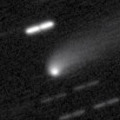
|
It brightened very rapidly in 2015 spring, and reached up to 13.8 mag (2015 May 11, Sandor Szabo). It is bright as 14.4 mag still now (May 12, Yasukazu Ikari). It is observable in excellent condition in the Southern Hemisphere. But it locates somewhat low in the Northern Hemisphere.
Date(TT) R.A. (2000) Decl. Delta r Elong. m1 Best Time(A, h)
June 11 13 40.38 -26 12.1 3.570 4.303 130 15.8 20:20 (180, 81)
June 18 13 40.72 -25 48.1 3.675 4.332 124 15.9 19:53 (180, 81)
|
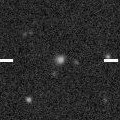
|
Now it is 16.3 mag (May 20, Artyom Novichonok). It is expected to brighten up to 7 mag in 2017 spring. But it locates somewhat low at the high light.
Date(TT) R.A. (2000) Decl. Delta r Elong. m1 Best Time(A, h)
June 11 11 7.79 -0 5.1 4.390 4.467 87 16.2 18:25 (164, 54)
June 18 11 9.61 -0 6.1 4.430 4.397 81 16.2 18:25 (153, 52)
|

|
Now it is 16.5 mag (May 31, Michael Jager). It will be getting lower after this, and will be unobservable in August. It will brighten up to 14 mag in 2017. The perihelion distance increases from 2.4 a.u. to 2.9 a.u. in this apparition, and the comet will not brighten as before.
Date(TT) R.A. (2000) Decl. Delta r Elong. m1 Best Time(A, h)
June 11 11 27.22 12 16.8 3.576 3.672 87 16.3 18:25 (174, 43)
June 18 11 30.67 11 35.0 3.661 3.656 81 16.4 18:25 (166, 42)
|
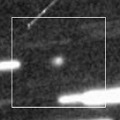
|
Now it is 17.2 mag (May 8, Space Surveillance Telescope, Atom Site). It will be observable at 13 mag for a long time from 2017 to 2018. In 2016, it keeps observable at 16-17 mag in good condition until autumn.
Date(TT) R.A. (2000) Decl. Delta r Elong. m1 Best Time(A, h)
June 11 20 1.84 -11 51.7 5.578 6.384 139 16.6 2:44 (180, 67)
June 18 19 56.30 -11 34.7 5.463 6.340 147 16.5 2:11 (180, 67)
|
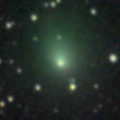
|
It brightened up to 10 mag in 2015 autumn. Now it is appearing in the morning sky, but it must be already fainter than 16 mag.
Date(TT) R.A. (2000) Decl. Delta r Elong. m1 Best Time(A, h)
June 11 2 23.75 10 19.0 3.247 2.604 43 16.6 5:34 (238, 22)
June 18 2 33.50 11 0.6 3.223 2.646 47 16.7 5:36 (234, 25)
|

|
Now it is bright as 15.9 mag (Apr. 9, Hidetaka Sato). It keeps 16 mag for a long time from 2016 to 2017. In 2016, it is observable in excellent condition in the Southern Hemisphere, but it locates extremely low in the Northern Hemispehre.
Date(TT) R.A. (2000) Decl. Delta r Elong. m1 Best Time(A, h)
June 11 12 7.40 -30 52.6 3.115 3.617 111 16.6 18:47 (180, 86)
June 18 12 12.01 -29 19.0 3.165 3.587 106 16.6 18:25 (178, 84)
|

|
It brightened up to 3.7 mag and became a naked eye comet in mid January in 2015 (Jan. 13, Marek Biely). Now it is fading. It has already faded down to 16.0 mag (May 7, Yuji Ohshima). In the Northern Hemisphere, it keeps observable for a long time until the comet fades out. It locates somewhat low in the Southern Hemisphere.
Date(TT) R.A. (2000) Decl. Delta r Elong. m1 Best Time(A, h)
June 11 17 53.32 26 42.9 5.183 5.881 129 16.6 0:36 (180, 28)
June 18 17 47.79 26 22.1 5.236 5.943 130 16.7 0:03 (180, 29)
|
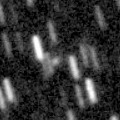
|
Now it is 17.0 mag (Feb. 7, iTelescope Observatory, Siding Spring). It keeps 16.5 mag for a long time in 2016, and it will be observable in excellent condition in the Southern Hemisphere. It is hardly observable in the Northern Hemisphere.
Date(TT) R.A. (2000) Decl. Delta r Elong. m1 Best Time(A, h)
June 11 3 43.25 -36 50.6 3.707 3.386 63 16.6 5:34 (295, 33)
June 18 3 44.29 -37 2.7 3.659 3.393 66 16.6 5:36 (293, 38)
|
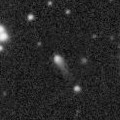
|
Now it is 16.5 mag (May 11, D. Buczynski). It keeps 16.5 mag from 2016 to 2017. It is observable in good condition in the Northern Hemisphere. In the Southern Hemisphere, it locates low in 2016, and it is not observable in 2017.
Date(TT) R.A. (2000) Decl. Delta r Elong. m1 Best Time(A, h)
June 11 17 0.19 34 4.9 5.763 6.369 122 16.7 23:38 (180, 21)
June 18 16 55.73 34 38.6 5.781 6.360 120 16.7 23:06 (180, 20)
|

|
It brightened rapidly up to 15.6 mag (May 13, iTelescope Observatory, Siding Spring). It keeps observable at 16 mag until autumn.
Date(TT) R.A. (2000) Decl. Delta r Elong. m1 Best Time(A, h)
June 11 12 58.05 -14 43.4 1.535 2.207 118 16.7 19:38 (180, 70)
June 18 13 2.71 -14 2.3 1.581 2.185 112 16.7 19:15 (180, 69)
|
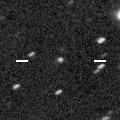
|
Now it is 16.9 mag (May 7, K. Sarneczky). It brightened rapidly, and became brighter than originally expected. It keeps 17 mag until 2017. It is observable in excellent condition in the Northern Hemisphere. It is not observable in the Southern Hemisphere.
Date(TT) R.A. (2000) Decl. Delta r Elong. m1 Best Time(A, h)
June 11 13 38.64 72 26.8 7.434 7.285 77 16.9 20:17 (180,-17)
June 18 13 27.80 71 25.3 7.472 7.283 75 16.9 19:39 (180,-16)
|

|
It brightened up to 15 mag from late 2014 to early 2016. Now it is fading slowly. In the Northern Hemisphere, it will be observable at 17 mag in autumn in good condition. It locates extremely low in the Southern Hemisphere.
Date(TT) R.A. (2000) Decl. Delta r Elong. m1 Best Time(A, h)
June 11 0 21.19 34 48.0 5.130 4.781 64 16.9 5:34 (199, 17)
June 18 0 18.79 36 1.3 5.056 4.809 70 16.9 5:36 (192, 18)
|
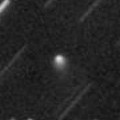
|
Now it is 16.4 mag (May 10, Catalina Sky Survey). It keeps brightening even after the perihelion passage. It keeps observable at 17 mag in good condition until autumn.
Date(TT) R.A. (2000) Decl. Delta r Elong. m1 Best Time(A, h)
June 11 14 41.25 6 30.6 5.827 6.546 131 16.9 21:20 (180, 49)
June 18 14 38.54 7 3.1 5.933 6.567 124 17.0 20:50 (180, 48)
|

|
First return of a new periodic comet which brightened up to 16.5 mag in 2008. The condition of this apparition is very good. It is expected to brighten up to 15.5 mag in autumn and will be observable in good condition.
Date(TT) R.A. (2000) Decl. Delta r Elong. m1 Best Time(A, h)
June 11 23 58.42 -21 43.5 2.379 2.581 89 17.1 5:34 (232, 70)
June 18 0 5.65 -21 0.6 2.278 2.560 94 17.0 5:36 (217, 73)
|

|
Now it is 19.3 mag (May 4, Hidetaka Sato). It will brighten up to 16.5 mag in summer and will be observable in good condition.
Date(TT) R.A. (2000) Decl. Delta r Elong. m1 Best Time(A, h)
June 11 18 7.39 -12 45.3 1.866 2.857 164 17.1 0:50 (180, 68)
June 18 18 2.10 -12 16.4 1.832 2.835 168 17.0 0:18 (180, 67)
|
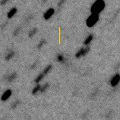
|
It brightened rapidly up to 15.1 mag in May (May 12, Yuji Ohshima). It will fade out rapidly after this. It is observable in excellent condition in the Southern Hemisphere. It locates low in the Northern Hemisphere.
Date(TT) R.A. (2000) Decl. Delta r Elong. m1 Best Time(A, h)
June 11 14 44.68 -39 32.6 1.175 2.082 143 17.1 21:24 ( 0, 85)
June 18 14 40.44 -40 11.5 1.232 2.097 137 17.3 20:52 ( 0, 85)
|
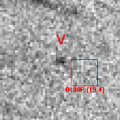
|
It is expected to brighten up to 16 mag and observable in good condition in autumn. However, it is so faint as 19.7 mag now (Apr. 16, A. Maury, J.-B. de Vanssay, J.-G. Bosch, J.-F. Soulier).
Date(TT) R.A. (2000) Decl. Delta r Elong. m1 Best Time(A, h)
June 11 23 5.30 -13 23.1 2.748 3.059 98 17.3 5:34 (189, 68)
June 18 23 9.81 -12 55.3 2.634 3.036 103 17.1 5:24 (180, 68)
|

|
It brightened up to 13-14 mag from 2014 to 2015. Now it is fading. It has already faded down to 18.1 mag (Apr. 23, Slooh.com Canary Islands Observatory). It will be observable at 17 mag in 2016.
Date(TT) R.A. (2000) Decl. Delta r Elong. m1 Best Time(A, h)
June 11 23 22.07 -2 48.1 5.057 5.160 90 17.2 5:34 (194, 57)
June 18 23 24.11 -2 42.4 4.993 5.203 96 17.2 5:36 (181, 58)
|

|
It was observed as bright as 13-14 mag for a long time from 2011 to 2014. Now it is fading. It is observable in excellent condition in the Southern Hemisphere. It locates extremely low in the Northern Hemisphere. No observations have been reported since August, 2015.
Date(TT) R.A. (2000) Decl. Delta r Elong. m1 Best Time(A, h)
June 11 17 36.51 -36 56.5 8.573 9.559 165 17.4 0:20 ( 0, 88)
June 18 17 31.64 -37 7.6 8.605 9.593 165 17.4 23:43 ( 0, 88)
|
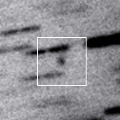
|
Now it is 18.0 mag (Apr. 12, A. Maury, J.-B. de Vanssay, J.-G. Bosch, J.-F. Soulier). It keeps observable at 17.5 mag in good condition from spring to autumn in the Southern Hemisphere. It is not observable in the Northern Hemisphere.
Date(TT) R.A. (2000) Decl. Delta r Elong. m1 Best Time(A, h)
June 11 18 3.40 -64 27.8 4.220 5.020 137 17.6 0:47 ( 0, 61)
June 18 17 58.09 -64 30.5 4.203 5.013 138 17.6 0:14 ( 0, 60)
|

|
Now it is 18.5 mag (Apr. 14, Hidetaka Sato). It will brighten up to 16 mag and will be observable in good condition in 2017. In 2016, it is observable in excellent condition in the Southern Hemisphere, but it keeps low in the Northern Hemisphere.
Date(TT) R.A. (2000) Decl. Delta r Elong. m1 Best Time(A, h)
June 11 19 26.91 -39 32.2 2.534 3.438 148 17.7 2:10 ( 0, 86)
June 18 19 22.47 -39 53.8 2.477 3.419 153 17.6 1:38 ( 0, 85)
|

|
Now it is 17.5 mag (June 3, iTelescope SRO Observatory, Auberry). It keeps 17-18 mag until autumn. It keeps observable in excellent condition in the Northern Hemisphere. It will be getting lower gradually in the Southern Hemisphere.
Date(TT) R.A. (2000) Decl. Delta r Elong. m1 Best Time(A, h)
June 11 23 20.18 2 6.2 2.110 2.320 88 17.8 5:34 (192, 52)
June 18 23 15.17 5 26.2 1.985 2.308 95 17.6 5:30 (180, 50)
|

|
Now it is 16.8 mag (May 10, Catalina Sky Survey). It will be fading after this, and will be fainter than 18 mag soon.
Date(TT) R.A. (2000) Decl. Delta r Elong. m1 Best Time(A, h)
June 11 14 27.59 -0 5.1 1.949 2.742 132 17.7 21:07 (180, 55)
June 18 14 26.52 -1 4.8 2.030 2.760 126 17.9 20:38 (180, 56)
|

|
Although it was bright as 17 mag at the discovery in 2006, it faded out before the perihelion passage in 2008, and it became lost. Now it is fainter than 19 mag (May 30, Jean-Francois Soulier).
Date(TT) R.A. (2000) Decl. Delta r Elong. m1 Best Time(A, h)
June 11 15 34.01 6 18.1 3.632 4.469 141 17.8 22:13 (180, 49)
June 18 15 30.96 5 59.5 3.678 4.462 135 17.8 21:42 (180, 49)
|

|
Very far object. Outburst occured on Feb. 20, 2015, and it brightened up to 15 mag. Now it is 16.7 mag (Apr. 4, Hidetaka Sato). It is observable in excellent condition in the Southern Hemisphere. It locates somewhat low in the Northern Hemisphere.
Date(TT) R.A. (2000) Decl. Delta r Elong. m1 Best Time(A, h)
June 11 13 10.69 -22 52.2 8.592 9.193 123 17.8 19:50 (180, 78)
June 18 13 10.67 -22 36.0 8.688 9.196 117 17.8 19:23 (180, 78)
|

|
It has not been observed in this apparition yet. It will brighten up to 17.5 mag in summer.
Date(TT) R.A. (2000) Decl. Delta r Elong. m1 Best Time(A, h)
June 11 20 45.10 -17 53.3 2.408 3.172 131 17.9 3:27 (180, 73)
June 18 20 44.26 -17 52.1 2.331 3.163 138 17.8 2:59 (180, 73)
|
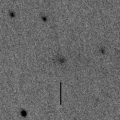
|
Now it is 16.8 mag (Apr. 12, Hidetaka Sato). It was expected to brighten up to 14 mag from winter to summer. But it is much fainter actually. It will be observable in excellent condition in the Southern Hemisphere. It locates low in the Northern Hemisphere.
Date(TT) R.A. (2000) Decl. Delta r Elong. m1 Best Time(A, h)
June 11 16 11.64 -40 9.7 1.810 2.777 157 18.1 22:51 ( 0, 85)
June 18 16 8.32 -40 4.8 1.877 2.823 153 18.3 22:20 ( 0, 85)
|
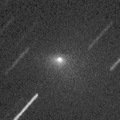
|
First return of an object discovered as an asteroid 2007 VA85 in 2007. It brightened very rapidly since mid February, and brightened up to 11.3 mag in spring (Mar. 5, Juan Jose Gonzalez). In the Northern Hemisphere, it located extremely low in May, but it is appearing in the morning sky again. However, it may fade out very rapidly and may be fainter than 18 mag. It keeps unobservable until September in the Southern Hemisphere.
Date(TT) R.A. (2000) Decl. Delta r Elong. m1 Best Time(A, h)
June 11 2 44.94 48 51.2 2.075 1.445 39 18.6 5:34 (215, -9)
June 18 2 37.74 50 44.1 2.030 1.503 45 18.7 5:36 (209, -6)
|
|
![]()
 C/2014 W2 ( PanSTARRS )
C/2014 W2 ( PanSTARRS ) C/2013 US10 ( Catalina )
C/2013 US10 ( Catalina ) 29P/Schwassmann-Wachmann 1
29P/Schwassmann-Wachmann 1 P/2016 J3 ( STEREO )
P/2016 J3 ( STEREO ) 116P/Wild 4
116P/Wild 4 53P/Van Biesbroeck
53P/Van Biesbroeck 118P/Shoemaker-Levy 4
118P/Shoemaker-Levy 4 C/2011 KP36 ( Spacewatch )
C/2011 KP36 ( Spacewatch ) 77P/Longmore
77P/Longmore 146P/Shoemaker-LINEAR
146P/Shoemaker-LINEAR C/2015 TQ209 ( LINEAR )
C/2015 TQ209 ( LINEAR ) C/2015 T4 ( PanSTARRS )
C/2015 T4 ( PanSTARRS ) C/2015 V2 ( Johnson )
C/2015 V2 ( Johnson ) C/2014 W11 ( PanSTARRS )
C/2014 W11 ( PanSTARRS ) C/2015 ER61 ( PanSTARRS )
C/2015 ER61 ( PanSTARRS ) 65P/Gunn
65P/Gunn C/2015 O1 ( PanSTARRS )
C/2015 O1 ( PanSTARRS ) 22P/Kopff
22P/Kopff C/2016 B1 ( NEOWISE )
C/2016 B1 ( NEOWISE ) C/2014 Q2 ( Lovejoy )
C/2014 Q2 ( Lovejoy ) C/2015 B2 ( PanSTARRS )
C/2015 B2 ( PanSTARRS ) C/2014 OE4 ( PanSTARRS )
C/2014 OE4 ( PanSTARRS ) 237P/LINEAR
237P/LINEAR C/2014 R3 ( PanSTARRS )
C/2014 R3 ( PanSTARRS ) C/2014 A4 ( SONEAR )
C/2014 A4 ( SONEAR ) C/2015 LC2 ( PanSTARRS )
C/2015 LC2 ( PanSTARRS ) P/2008 J3 ( McNaught )
P/2008 J3 ( McNaught ) 219P/LINEAR
219P/LINEAR 100P/Hartley 1
100P/Hartley 1 188P/LINEAR-Mueller
188P/LINEAR-Mueller C/2012 F3 ( PanSTARRS )
C/2012 F3 ( PanSTARRS ) C/2010 S1 ( LINEAR )
C/2010 S1 ( LINEAR ) C/2015 H2 ( PanSTARRS )
C/2015 H2 ( PanSTARRS ) 47P/Ashbrook-Jackson
47P/Ashbrook-Jackson C/2016 K1 ( LINEAR )
C/2016 K1 ( LINEAR ) 180P/NEAT
180P/NEAT P/2006 F1 ( Kowalski )
P/2006 F1 ( Kowalski ) C/2013 C2 ( Tenagra )
C/2013 C2 ( Tenagra ) P/2008 T1 ( Boattini )
P/2008 T1 ( Boattini ) C/2014 Y1 ( PanSTARRS )
C/2014 Y1 ( PanSTARRS ) 333P/LINEAR
333P/LINEAR![]()





































